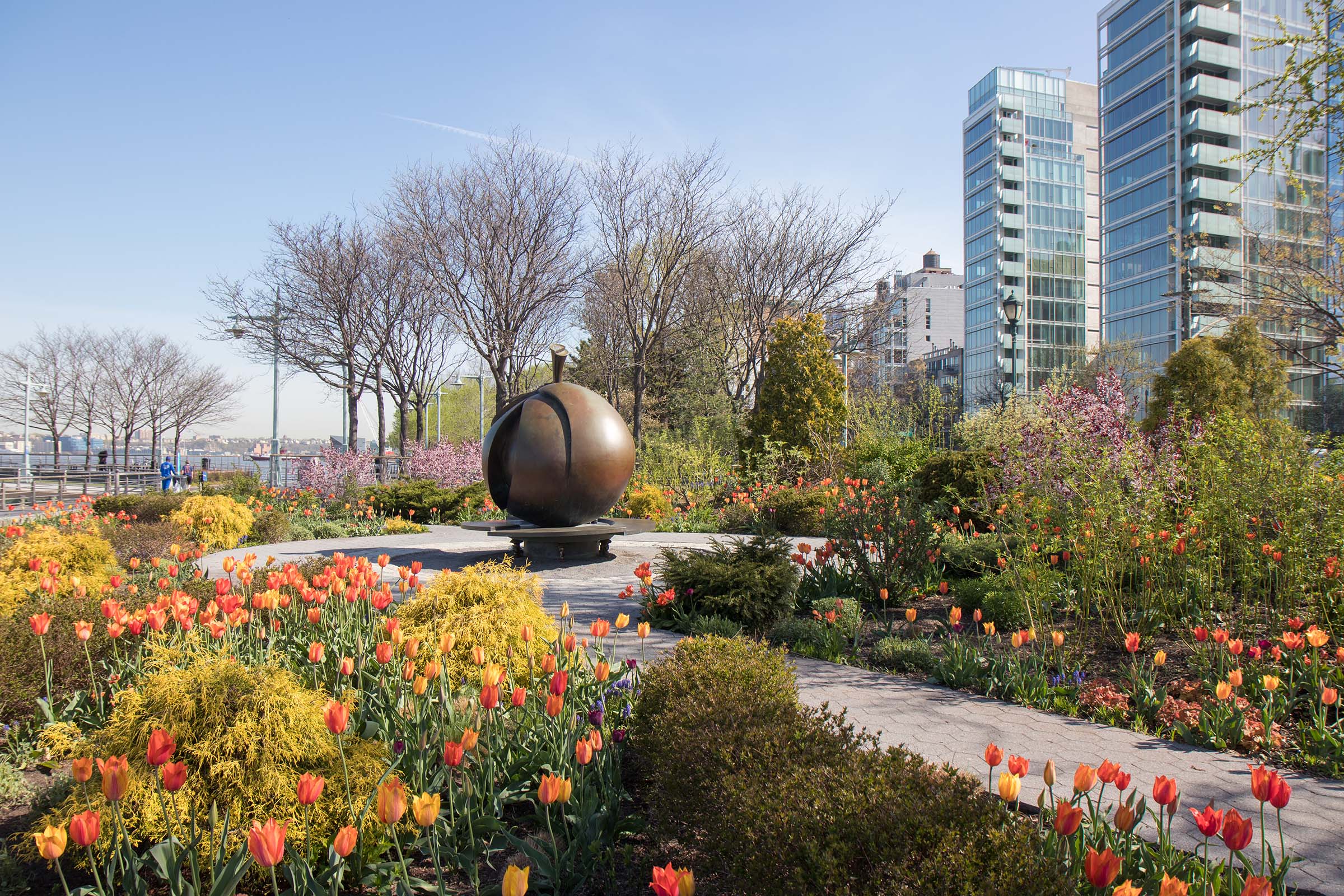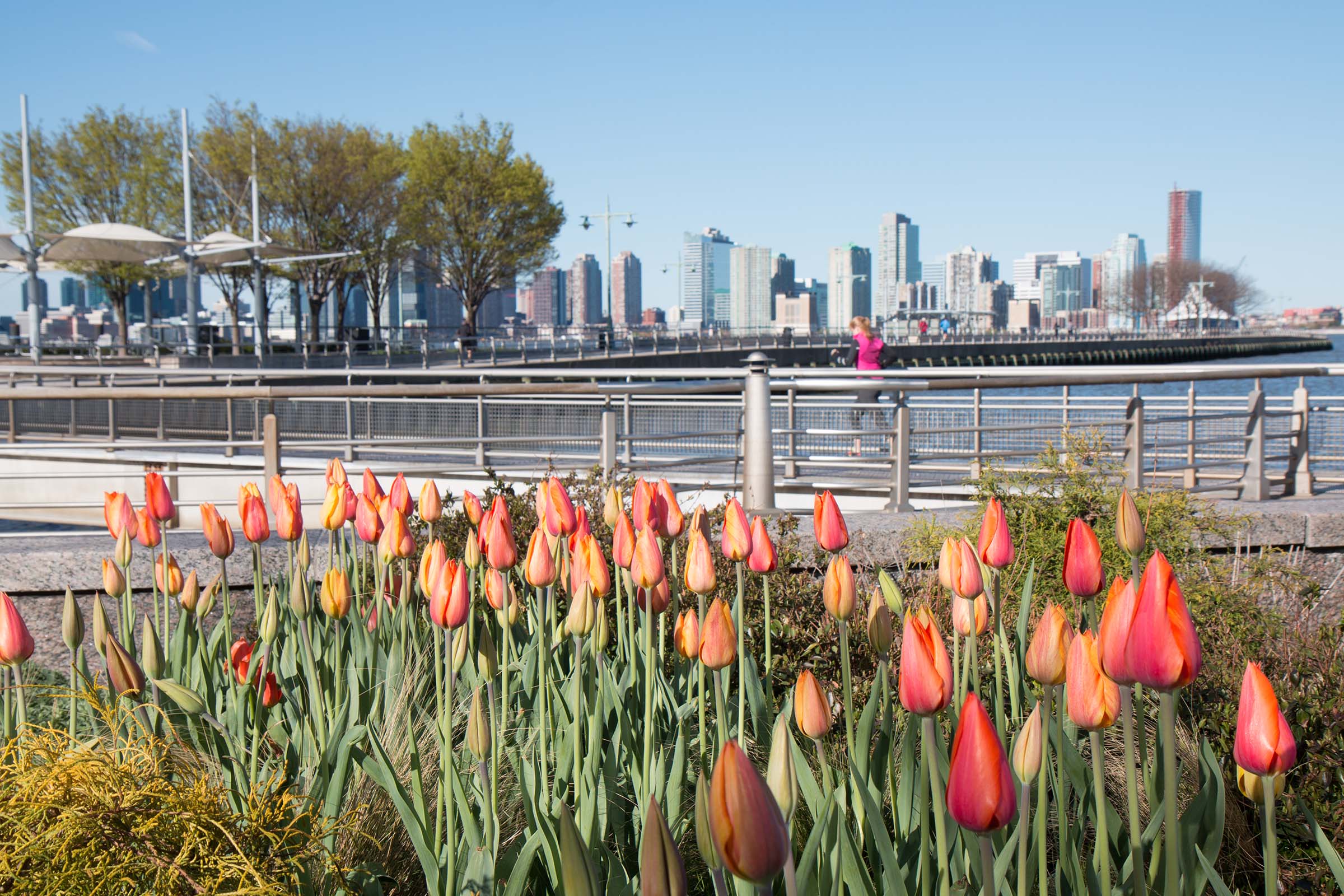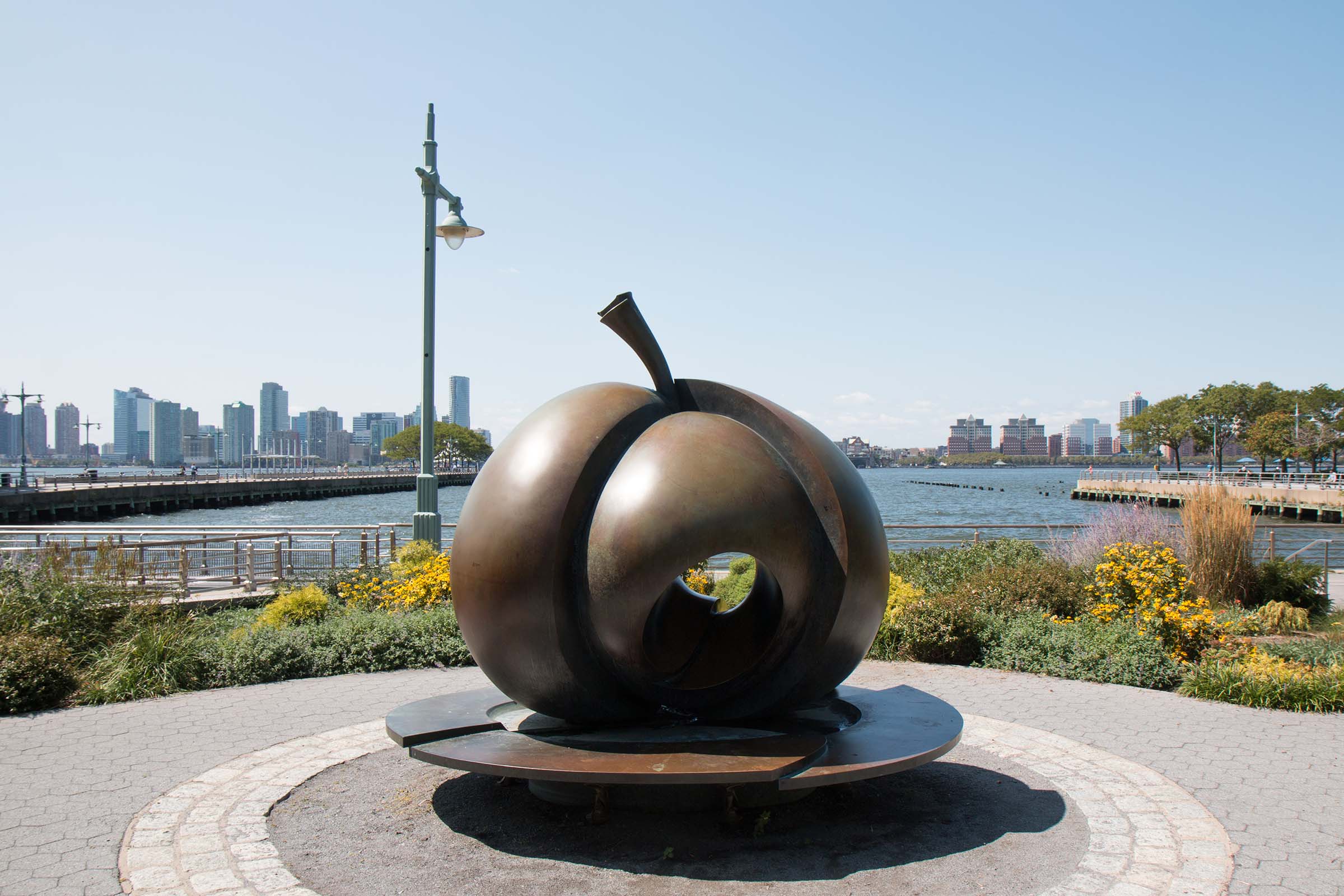Home to established trees and shrubs, the storied West Village Park area includes the Apple Garden, named for the bronze sculpture designed by Stephan Weiss at its center, a whimsical tribute to New York City.

When approaching the park from any West Village side street, the Hudson River comes into view through a lush layered landscape. Piers 45, 46 and 51 and their adjacent upland areas was the first section of the park to undergo construction, with its official ribbon cutting in 2002. Except for a few trees in Chelsea, the plant material here is the most mature in the nearly 5 miles of riverfront parkland.
The timeless landscape in Greenwich Village consists of conifers, deciduous canopy trees and an evergreen understory. The sculptural Japanese white pines, large native red maples and expansive oaks protect the lawns from both sun and wind.
A diverse understory of native inkberry and bayberry bushes along with mature Japanese yews provides foliage, fruit and interesting textures. Abundant English ivy crawls along the ground plain to create an evergreen carpet of foliage. Many understory flowering trees such as magnolia, serviceberry and dogwood are scattered throughout the plant beds, giving splashes of white and pink flowers come spring.
 The Apple
The Apple
Designed and donated originally by the Garden Club of New York, and later updated by Lynden Miller, the Apple Garden includes plants not found anywhere else in the park such as Japanese quince and honeysuckle. A trio of tall golden Sawara cypress create a dramatic backdrop for the sculpture. The encircling plant selection compliments the bronze with shades of orange, brown, purple and yellow, blooming continuously from early spring to early winter.
Sitting at the base of The Apple is a fine place to enjoy the sweeping river and landscape vistas in the West Village.
For a listing of blooms in the Park, view our Bloom Guide.